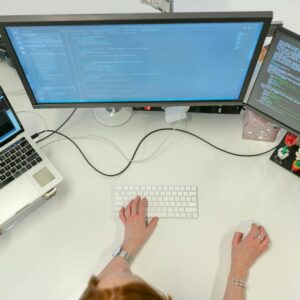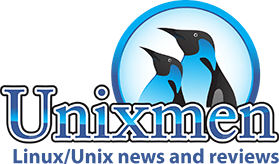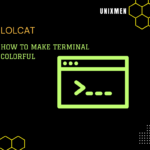 In today’s rapidly evolving digital world, healthcare software development has emerged as one of the most pivotal aspects of the medical and health industry. Digital transformation is reshaping how healthcare providers deliver services, interact with patients, and manage internal operations. Healthcare software development now plays a central role in enhancing medical practices, improving patient care, and streamlining administrative functions.
In today’s rapidly evolving digital world, healthcare software development has emerged as one of the most pivotal aspects of the medical and health industry. Digital transformation is reshaping how healthcare providers deliver services, interact with patients, and manage internal operations. Healthcare software development now plays a central role in enhancing medical practices, improving patient care, and streamlining administrative functions.
From electronic health records (EHR) and telemedicine platforms to predictive analytics and wearable health technologies, customized healthcare software is revolutionizing the industry by improving efficiency, increasing accessibility, and fostering better patient outcomes. Underpinning much of this innovation is a reliance on robust backend infrastructure, often powered by Unix-like operating systems such as Linux.
The Evolution of Healthcare Software Development
Healthcare software development began as early as the 1960s, when the first computerized medical record systems emerged. However, a major leap occurred in the 1990s with the widespread adoption of EHRs. These systems allowed healthcare providers to transition from paper-based records to digital formats, improving accessibility and organization of patient data.
In the 21st century, the scope of healthcare software has expanded significantly. Developers now build platforms for telemedicine, remote monitoring, AI-powered diagnostics, and health data analytics. Technologies such as artificial intelligence (AI), big data, blockchain, and cloud computing are transforming how medical professionals collect, analyze, and act on data.
Key Areas of Healthcare Software Development
- Electronic Health Records (EHR) Systems
EHR systems are foundational to modern healthcare IT. They allow providers to view patients’ medical histories, prescriptions, lab results, and treatment plans in real time. EHRs are designed for interoperability, making it easier to share patient information across hospitals and clinics. These systems also help healthcare providers adhere to regulations like HIPAA (U.S.) and GDPR (Europe).
Linux and Unix-based systems often serve as the backend for EHR platforms due to their stability, scalability, and security. Open-source EHR systems like OpenEMR and GNU Health are developed specifically for Unix-like environments, offering hospitals flexible and customizable solutions.
2. Telemedicine Platforms
Telemedicine allows doctors to consult, diagnose, and treat patients remotely using video conferencing and secure messaging. During the COVID-19 pandemic, demand for telehealth surged globally.
Developing telemedicine software involves integrating real-time communication tools, EHR access, e-prescriptions, and user authentication protocols. Developers often build these platforms on Linux servers using open-source libraries and tools. The flexibility of Unix-based environments is ideal for deploying scalable telemedicine applications, especially those requiring high uptime and data encryption.
3. Patient Management Systems
These systems manage patient scheduling, billing, and administrative workflows. They reduce paperwork and human error by automating routine tasks.
Linux/Unix servers are frequently used to host patient management systems because of their ability to handle multiple users and processes concurrently. Technologies such as Apache or NGINX (common on Unix/Linux) ensure efficient web server performance and data management.
4. Healthcare Mobile Apps
With the proliferation of smartphones, mobile health (mHealth) apps are now integral to healthcare. These apps allow patients to track medications, monitor fitness, access records, and attend virtual consultations.
Mobile apps often rely on cloud-based infrastructure running on Linux platforms. APIs built with Unix tools like Node.js, Python, or Go allow secure communication between the app and the healthcare provider’s servers.
5. Clinical Decision Support Systems (CDSS)
CDSS uses AI and machine learning to analyze patient data and provide evidence-based treatment recommendations. These tools assist physicians in diagnosing complex conditions and suggesting optimal therapies.
CDSS platforms require high-performance computing environments. Unix/Linux systems are frequently used for their ability to efficiently run intensive data-processing and machine-learning workloads using tools like TensorFlow, Scikit-learn, or PyTorch.
6. Healthcare Analytics
Healthcare analytics platforms gather and analyze vast amounts of medical data to uncover trends, predict outcomes, and inform decision-making. Predictive analytics help detect disease risks early, and prescriptive analytics recommend interventions.
Linux dominates in data science due to its command-line tools, scripting capabilities, and compatibility with major analytics frameworks. Popular tools such as R, Apache Spark, and Hadoop are often deployed on Linux servers for healthcare analytics projects.
7. Billing and Revenue Cycle Management
Revenue cycle software automates billing, coding, claims processing, and insurance management. Proper integration reduces financial errors and accelerates payment processing.
Backend systems for billing software benefit from Unix’s multitasking capabilities, secure user privileges, and efficient resource management. Additionally, Linux allows integration with third-party payment and compliance APIs.
8. Healthcare IoT and Wearables
IoT devices like smartwatches and biosensors collect health data in real time. These devices communicate with cloud-based healthcare platforms to monitor patient conditions remotely.
Unix-based operating systems (such as embedded Linux) power many IoT devices due to their lightweight design and real-time capabilities. Developers use Linux-friendly protocols like MQTT and CoAP to enable efficient device communication and data transfer.
Linux/Unix Programming in Healthcare Software Development
Linux and Unix play a foundational role in healthcare software development. Many healthcare applications rely on backend systems running on Unix-based servers for reasons that include:
- Reliability: Linux systems are known for their uptime, which is critical for healthcare applications that need to be accessible 24/7.
- Security: Unix systems implement strict user permissions and offer strong tools for encryption and network security—essential for handling protected health information (PHI).
- Flexibility: Open-source nature allows developers to modify and optimize system configurations for specific healthcare needs.
- Scalability: Unix systems can be scaled to handle large databases and user volumes, which is vital for hospitals and research facilities.
Popular Linux tools and technologies used in healthcare software include:
- Shell scripting for automation (e.g., backup of patient data).
- Cron jobs for scheduling tasks like data synchronization or report generation.
- Docker and Kubernetes for containerizing healthcare applications.
- MySQL/PostgreSQL databases for storing patient and operational data.
- Bash and Python scripts for processing medical files and integrating APIs.
Additionally, many regulatory and compliance frameworks require secure logging, auditing, and data encryption—all of which are efficiently handled using Linux tools such as iptables, auditd, and OpenSSL.
Benefits of Healthcare Software Development
- Improved Patient Care
Software tools provide healthcare professionals with accurate and real-time access to patient data, improving decision-making and personalizing treatment. Platforms powered by Unix systems offer consistent uptime and data availability, ensuring uninterrupted patient service. - Operational Efficiency
Automating scheduling, billing, and record-keeping allows hospitals to streamline processes. Unix-based systems can handle concurrent tasks with high performance and low error rates, further enhancing efficiency. - Enhanced Data Security
Security is paramount in healthcare. Unix and Linux systems support file-level encryption, access controls, and secure protocols (SSH, SFTP) to safeguard sensitive data. - Cost Reduction
Using open-source Unix-based software reduces licensing costs. Automation also decreases manual work, which lowers labor costs. - Better Decision Making
AI-powered software running on Linux platforms can analyze large datasets to generate actionable insights, enhancing clinical and operational decision-making.
Challenges in Healthcare Software Development
- Regulatory Compliance
Developers must ensure compliance with health data protection laws. Unix tools such as SELinux, AppArmor, and encrypted file systems help achieve compliance. - Interoperability
Many legacy systems use outdated or proprietary protocols. Linux offers open standards and APIs to bridge systems together, but full integration can still be difficult. - User Adoption
Healthcare workers may be hesitant to switch to new software systems. Intuitive user interfaces and comprehensive training are essential to ease the transition.
The Future of Healthcare Software Development
Looking ahead, the healthcare software development industry will continue to embrace new technologies. Personalized medicine, driven by AI and genomics, is becoming more feasible thanks to scalable Linux servers and open-source data science tools.
Other promising innovations include:
- Blockchain for secure, tamper-proof patient data exchange.
- Augmented Reality (AR) and Virtual Reality (VR) for medical training and remote surgery.
- 5G for faster and more reliable telemedicine experiences.
- Edge computing on Linux-powered IoT devices for real-time diagnostics.
Conclusion
Healthcare software development is revolutionizing how healthcare is delivered, managed, and experienced. From EHR systems to IoT integration, digital tools are transforming the industry for the better. Unix and Linux play a critical role in this transformation by providing the secure, scalable, and customizable foundation needed to support modern healthcare solutions.
As developers continue to innovate and overcome challenges like compliance and interoperability, the future promises more efficient systems, better patient outcomes, and broader access to quality healthcare—powered, in no small part, by the robust architecture of Unix-based platforms.





